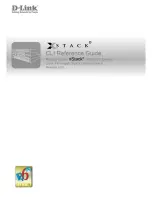
VSF restrictions
• VSF is mutually exclusive with distributed trunking, mesh, and Q-in-Q.
• VSF port restrictions:
◦ Must be 10Gbps/1Gbps.
◦ A VSF link can only comprise ports with the same speed; either all 10G or all 1G. A VSF port speed which
does not match with the global port speed, will be in a down state. The command
show vsf link
detail
will display an error message.
◦ Maximum eight ports can be configured on one VSF link.
◦ VSF ports must be directly connected and there should be no transit devices between members.
• In a VSF virtual chassis, flow-control is not supported between ports on different chassis across VSF links.
• A VSF stack downgrade is not allowed if we try to downgrade a 2930 VSF stack having a stack size greater
than four members, to an image lesser than 16.06.
• For switches running software versions lesser than 16.06, it is recommended to first upgrade to 16.06 for
supporting a stack having more than four members.
• VSF merge between a fragment running a software version 16.06 and a fragment running an image lesser
than 16.06 is not recommended.
• A power outage or cable connection failures can split a stack with greater than four members, into more than
two fragments (for example, 1-2-3-4, 5-6, and 7-8). To restore the stack to its previous state after addressing
the issues, ensure that not more than two fragments are merged at a time. For example, merge 1-2-3-4 with
5-6, followed by merging 1-2-3-4-5-6 with 7-8.
VSF Use Cases
Use Case 1: Multiple Active Detection
What is MAD?
Multiple Active Detection (MAD) is a protection mechanism against the fallout of a VSF stack split. A stack split
occurs when there is a connectivity failure between the two stack switches. The simplest protection against
connectivity failure is to have multiple redundant ports in the VSF link.
The two switches operate in a “split-brain” scenario. Both split fragments cannot talk to each other and are
forwarding traffic, but:
• they have the same MAC address,
• they have the same IP addresses on all VLANs, and
• depending on the deployment, they are likely to be connected to same uplink/downlink switches though a link-
aggregation.
A MAD protocol must be enabled to prevent network-wide issues that a stack split can cause. MAD protocols
attempt to detect the presence of the other stack fragment. If detected, the goal of MAD is to keep only one stack
706
Aruba 2930F / 2930M Management and Configuration Guide
for ArubaOS-Switch 16.08
















































